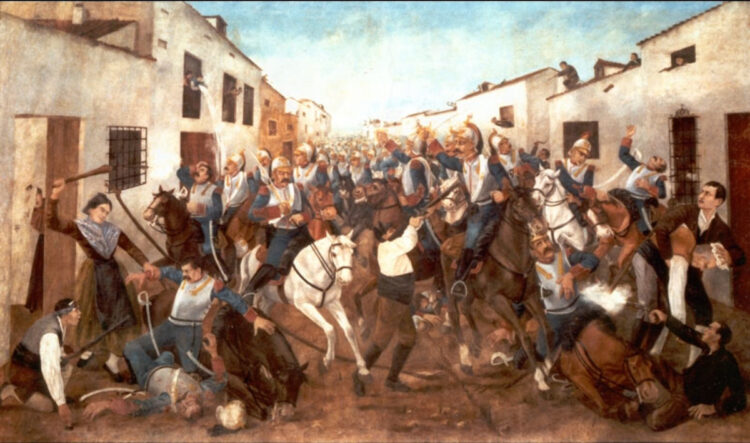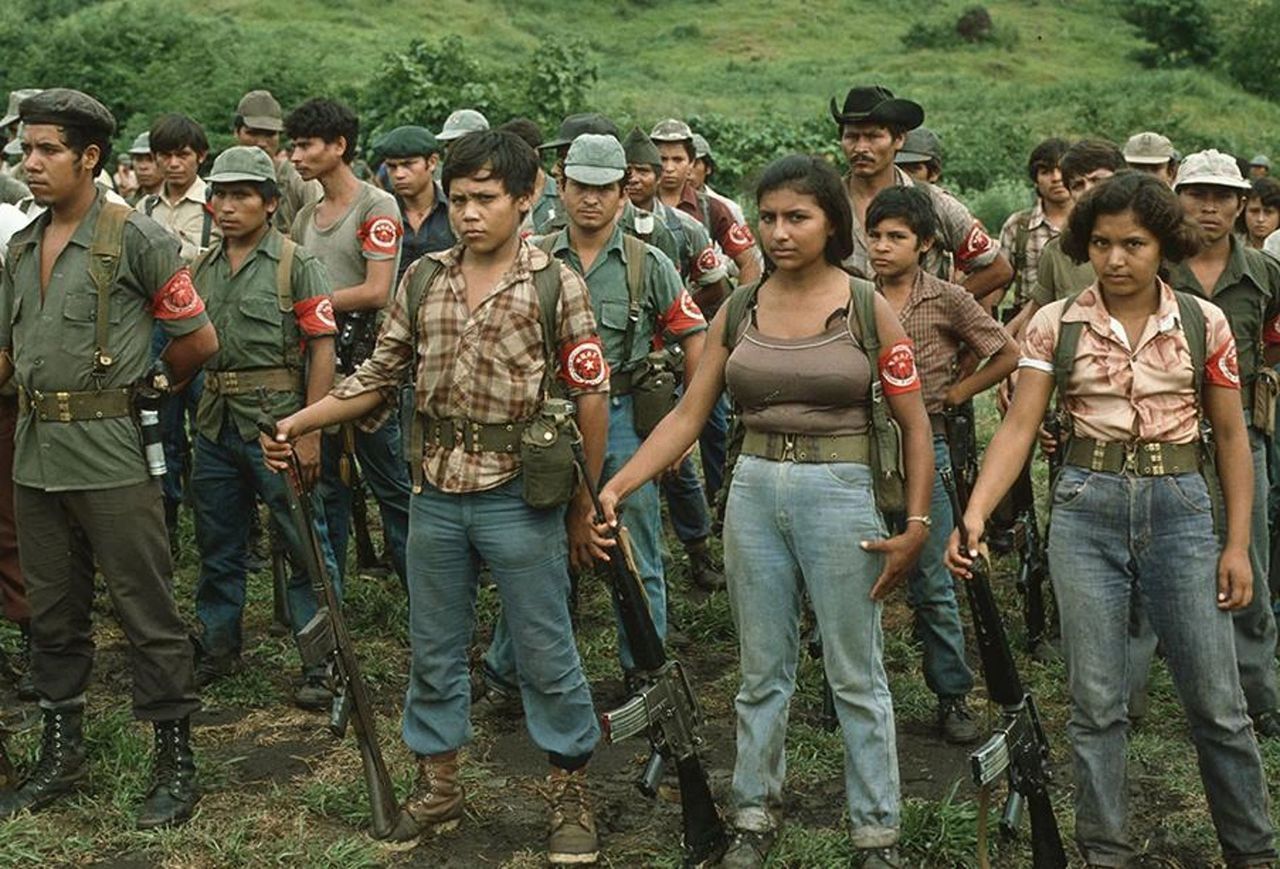FLMN
Guerrilla warfare is a form of irregular warfare characterized by unconventional tactics used by a smaller, less-organized group to challenge and disrupt a larger, more powerful military force. Guerrilla tactics aim to exploit the weaknesses of the conventional forces and often rely on surprise, mobility, and the support of local populations. The 3rd century BC Roman general Quintus Fabius Maximus Verrucosus is credited with inventing many of the tactics of guerrilla warfare through what is today called the Fabian strategy. Over the centuries the practitioners of guerrilla warfare have been called rebels, irregulars, insurgents, partisans, and mercenaries. Throughout history, numerous military groups have utilized guerrilla warfare tactics to challenge larger and more conventional forces. Here is a list of some notable military groups known for employing guerrilla warfare:
- Viet Cong – During the Vietnam War, the Viet Cong, also known as the National Liberation Front (NLF), employed guerrilla warfare tactics against the United States and South Vietnamese forces.
- Partisans (Various Countries) – Resistance movements, known as partisans, operated during World War II in occupied countries, including Yugoslavia, France, Italy, and Poland. These groups used guerrilla tactics to disrupt Axis forces and support the Allied effort.
- Irish Republican Army (IRA) – The IRA used guerrilla warfare tactics during its campaign for Irish independence from British rule in the 20th century.
- Fuerzas Armadas Revolucionarias de Colombia (FARC) – FARC, a Marxist-Leninist guerrilla group, was involved in a protracted conflict with the Colombian government for several decades until signing a peace agreement in 2016.
- Mujahideen – The Mujahideen fought against Soviet forces during the Soviet-Afghan War in the 1980s. They employed guerrilla tactics to resist the Soviet occupation.
- Eritrean People’s Liberation Front (EPLF) – EPLF was a guerrilla movement that fought for Eritrean independence from Ethiopia, leading to Eritrea’s independence in 1993.
- African National Congress (ANC) – The ANC, in its struggle against apartheid in South Africa, used guerrilla tactics as part of its armed wing, Umkhonto we Sizwe.
- Hukbalahap (Huk) – The Hukbalahap, also known as the Huk movement, was a communist guerrilla group that fought against the Philippine government during the 1940s and 1950s.
- Tamil Tigers (LTTE) – The Liberation Tigers of Tamil Eelam (LTTE) used guerrilla warfare in their fight for an independent Tamil state in Sri Lanka until their defeat in 2009.
- Sandinistas – The Sandinistas, officially the Frente Sandinista de Liberación Nacional (FSLN), utilized guerrilla tactics in Nicaragua during their revolution against the Somoza dictatorship.
- Shining Path (Sendero Luminoso) – Shining Path, a Maoist guerrilla group, engaged in an armed insurgency against the Peruvian government in the 1980s and 1990s.
- Palestinian Liberation Organization (PLO) – The PLO, founded in 1964, employed guerrilla warfare as part of its struggle for Palestinian self-determination.
The guerrilla must move amongst the people as a fish swims in the sea.
This is not an exhaustive list, and numerous other guerrilla groups and movements have emerged throughout history, each with its specific objectives and contexts. Guerrilla warfare has been a common strategy for various groups seeking to challenge established powers, gain independence, or advance their political agendas. What are the some of the Guerrilla tactics?

Why does the guerrilla fighter fight? We must come to the inevitable conclusion that the guerrilla fighter is a social reformer, that he takes up arms responding to the angry protest of the people against their oppressors, and that he fights in order to change the social system that keeps all his unarmed brothers in ignominy and misery.
Key Takeaways: Guerrilla Warfare
Hit-and-Run Attacks: Guerrilla fighters avoid direct confrontations with superior enemy forces and instead employ hit-and-run tactics. They strike quickly and unexpectedly against enemy targets and then swiftly retreat to evade retaliation. This tactic allows them to inflict damage on the enemy while minimizing casualties and avoiding decisive engagements.
Ambushes: Ambushes are a common guerrilla warfare tactic. Fighters set up concealed positions along enemy supply lines, communication routes, or patrol routes. When the enemy approaches, the guerrilla force launches a surprise attack from multiple directions, causing confusion and panic among the enemy.
Mobility and Evasion: Guerrilla fighters prioritize mobility and evasion to evade detection and capture. They move quickly and often use natural terrain and local knowledge to their advantage, making it challenging for the enemy to predict their movements.
Blend with Civilian Populations: Guerrilla fighters often operate within civilian populations, blending in with local communities. This tactic helps them avoid detection and makes it difficult for the enemy to distinguish combatants from non-combatants. It also allows guerrillas to gather intelligence and gain support from sympathetic locals.
Propaganda and Psychological Warfare: Guerrilla forces use propaganda and psychological warfare to weaken the morale of the enemy and gain support from the local population. This can involve disseminating information, distributing leaflets, or using radio broadcasts to influence public opinion.
Hit High-Value Targets: Guerrilla fighters target high-value enemy assets, such as officers, supply depots, communication centers, and infrastructure. By targeting critical elements of the enemy’s operations, they aim to disrupt their capabilities and undermine their control.
Deny the Enemy Safe Havens: Guerrilla fighters often use their knowledge of the local terrain to find and utilize safe havens. These areas provide cover and protection for rest, training, and reorganization, and they can be challenging for the enemy to locate and eliminate.
Asymmetric Warfare: Guerrilla warfare is a form of asymmetric warfare, meaning that the combatants have unequal military capabilities. The guerrilla force relies on unconventional tactics to compensate for its smaller size and lesser firepower.
Protracted Conflict: Guerrilla warfare is often a protracted and prolonged conflict, as the smaller force avoids direct confrontation and seeks to outlast the enemy’s patience, resources, and willpower.
Guerrilla warfare has been employed by various groups and organizations throughout history, from revolutionary movements and national liberation struggles to modern-day insurgency and counterinsurgency operations. Its effectiveness lies in its ability to challenge conventional military forces and create significant challenges for the enemy, even in the face of overwhelming odds.
SOURCE
https://en.wikipedia.org/wiki/Guerrilla_warfare
https://www.britannica.com/topic/guerrilla-warfare

